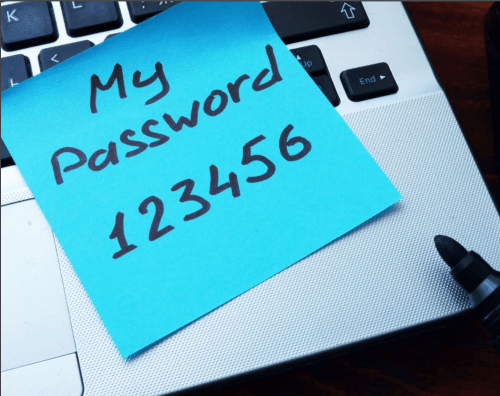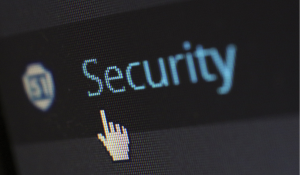How companies can benefit from two-factor authentication?
In a digitized world where companies and businesses are increasingly reliant on technology and online services, the security of sensitive data and...

Data breaches, phishing attacks, and credential stuffing are just a few of the dangers lurking around every corner. A simple username and password just isn't enough to protect your valuable information anymore. That's where Multi-Factor Authentication (MFA) comes in.
| TABLE OF CONTENT |
This crucial security measure adds layers of protection, making it significantly harder for unauthorized individuals to access your accounts, even if they manage to steal your password. In this post, we'll delve into the world of MFA, exploring what it is, how it works, and why it's absolutely essential for everyone in the digital age.
Multi-factor authentication (MFA) is a security mechanism that adds an extra layer of protection to user accounts and systems. It requires users to provide multiple forms of identification or authentication factors to verify their identity. Typically, MFA combines something the user knows (like a password or PIN) with something they have (such as a smartphone or security token) or something they are (like biometric data such as fingerprints or facial recognition).
By requiring multiple factors, MFA significantly reduces the risk of unauthorized access, as an attacker would need to possess multiple pieces of information to bypass the authentication process. This method has become widely adopted in various domains, including online banking, email services, and corporate networks, to enhance security and protect sensitive information.
There are many examples of MFA authentication:
Knowledge: something a user knows, such as passwords.
Possession: something the user has, such as an access badge or an OTP sent to an email address.
Inherence: something the user can prove, such as fingerprints or behavioural analysis.
Time: a time window such as OTP.
Security measures are important to protect sensitive data. But what do terms like 2FA, MFA and SSO actually mean and how do they differ? To give you a better understanding, we have summarised the most important differences between these authentication methods in a clear list:
Our need for simplicity and often by utilising the same password for multiple accesses becomes one of our biggest cybersecurity vulnerabilities. Accessing your devices, emails, and accounts can be a chore especially when having to remember complicated and irrelevant passwords. But having simple passwords can backfire when it comes to hackers. Reliance on passwords alone leaves companies vulnerable, especially with weak passwords such as; 123456 which topped 2018 as the most commonly used and hacked password.
The increasingly realistic phishing emails and with the media regularly reporting about new leaks, almost all websites demand minimum lengths and character combinations to make passwords more secure. More companies are developing the cybersecurity awareness of their employees with training courses.
In Singapore, 60% of businesses agree that their cybersecurity practices are outpaced by the rapidly expanding nature of cloud applications. Other inept security practices which allow cybercriminals to compromise your data include a lack of encryption appliance and multi-factor authentication. While data breaches can have a clear impact on a business' bottom line, it is not only the sophisticated cloud technology that has increased this problem but also the elementary security practices of most companies.
Mutli-Factor Authentication is a easy way to protect your sensitive data. Find out how it works in 5 steps:
A way to significantly strengthen your password is to combine it with other factors: multi-factor authentication (MFA). MFA is critical in protecting businesses from identity theft and unauthorised access to company data. MFA usually comprises of three key elements:
As outlined above, one of the key advantages of multi-factor authentication is that each layer supplements and accounts for the others' weakness. For example, the password that the user knows may be weak and easily hacked. But with MFA, unless the hacker were to obtain the above three elements, a breach is highly unlikely. MFA strengthens your security and is essential for cybersecurity.
MFA also leads toward more compliance with international standards to protect the sensitive information of users, customers etc. For example, The General Data Protection Regulation (GDPR) does not specifically require MFA, but various provisions within the Security Rule highlights the need for a stronger authentication process. This process is none other than MFA.
Indeed, with cybersecurity trending as a top priority for many businesses, especially with the expansion of cloud technology, more and more companies are implementing MFA. Markets And Markets predicted that by 2022, the MFA market is set to reach USD 12.51 Billion. This shows that many organisations believe in the significant role MFA plays and how it is, right now, one of the best security measures you can implement to protect your company, your users, and their sensitive data.
Nevertheless, MFA with smart cards is still not a standard in many companies. This is partly due to the costs for the introduction and daily operation as well as the administrative effort needed to maintain these smart cards. Companies need to discount approximately 10% of smart cards annually for loss, wear or theft. The maintenance is made difficult after the initial few years because the originally purchased smart cards are discontinued or only made available through a corresponding surcharge from the manufacturer.
Those who do not opt for a vendor-independent smart card middleware from the outset, are faced with further follow-up costs or even replacement fees for the complete hardware installation. All these factors can increase the total cost of ownership of physical smart cards and delay the use of multi-factor authentication at the expense of security.
Identity and Access Management - our "smartcard middleware" and "virtual smartcard" offer.
Virtual smart cards (VCSs) imitates the same functionalities as a physical smart card, only they combine software and existing hardware, the Trusted Platform Module (TPM) which exists on many computers, to secure data. This makes VSCs significantly more time and cost-effective.
VSCs work like physical smart card readers with an already inserted card and are recognised as such by the Windows operating system without any additional setup. They are bound to the respective device (e.g. PC or laptop) and are used like a normal smart card for the authentication in various scenarios including: Windows user login, web applications, e-mail signature and encryption, file encryption, VPN dial-up and many more certificate-based applications.
Virtual smart cards effectively diminish password vulnerability and strengthens your IT protection.
Multi-factor authentication (MFA) is an indispensable security barrier in today's digital world. It is a crucial tool for companies to protect their sensitive data and systems from unauthorised access. By combining multiple independent authentication factors, MFA significantly increases security and minimises the risk of cyberattacks. Even if an attacker obtains a password, they still need additional factors to successfully log in.
MFA not only provides effective protection against phishing attacks and other threats, but also helps to fulfil compliance requirements and strengthens the trust of customers and business partners. At a time when cyber threats are becoming increasingly sophisticated, implementing MFA is an essential step for any organisation that takes its cyber security seriously. Investing in MFA is an investment in the security and future of your organisation.

In a digitized world where companies and businesses are increasingly reliant on technology and online services, the security of sensitive data and...

Entering into a new decade requires businesses and professionals to rethink, reconsider and update their approach to IT security and ensuring the...

In our article "Security Awareness Programs: IT Security Starts with the Users." we discussed that the users need to feel involved with the...